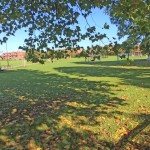
Additional trees have been planted on Chesney’s Field
It is perhaps a good time for the York Council to be considering its tree management policies.
Good progress has been made in many areas with the tree cover in the City having gradually increased in recent years.
The Council has so far fought shy of establishing a new (rural) area of woodland but hopefully that may come with the publication of the new draft Local Plan.
In Westfield volunteers have resourced a wide range of schemes including recently a parade of new trees alongside the footpath link across Chesney’s Field
However, the other side of the coin is that some inappropriately planted trees have now reached a height and depth which represents a nuisance of many residents. What has happened is that some trees, which were appropriate specimens for a rural location, have been left to grow unchecked in an urban setting causing misery to nearby residents.
In some cases, trees block out neighbour’s light, in some cases tree debris falls onto gardens and the highway, in other street lighting and warden assistance wires are blocked. In one or two cases the tree overgrows the highway causing a potential collision risks for high-sided vehicles.
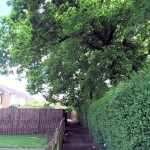
Tree blocking out street lights
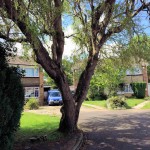
Tree blocking highway
That isn’t good enough and the York Council now needs to start proactively managing these trees. In many cases it will mean pruning branches. In some cases, it may mean felling the tree and replacing it with a suitable species.
The Councils recently published proposed new policy could actually exacerbate these issues. It says that the Council will not prune, cut roots or remove trees for the following reasons:
- · Encroachment into or over a neighbouring property (since the property owner already has a common law right to prune back to their boundary)
- · To prevent roots entering private drains that are already broken or damaged
- · To increase natural light or change the view into or out of a private property
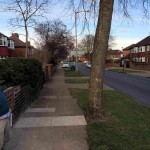
Trees planted too close to paths cause trips
- · To reduce or remove the perceived nuisance issues caused by birds, insects, falling debris, leafs (sic), blossom and fruit, or pollen
- To make way for new highway cross-overs (drives) or front garden parking
- · To address interference with solar collection, satellite dishes, TV reception or telephone cables
- · A tree being perceived to be too large or tall
- · A perceived risk that a tree could cause damage in the future
- · Disturbance to pavements, kerbs, garden paths and walls. (In these cases engineering solutions will be sought in the first instance ensuing that the tree can be maintained)
- · Neighbour disputes due to perceived nuisance from a tree
If adopted that would pretty much rule out proactive management of any tree in the urban area!
Residents generally regard the York Councils response to problems with overgrown trees and bushes as unhelpful, sometimes bordering on the obstructive
Our view would be that residents should have a right of appeal to a democratically elected body. There is already an appropriate one in place – the Ward Committee. Any resident who is unhappy with the ruling of the City’s arboricultural staff on a tree issue should be able to ask the Ward Committee to overturn the ruling.
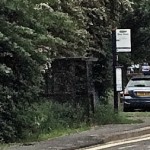
Bus shelter overgrown
We would also expect Ward Committees to allocate part of their delegated budget to fund the provision of additional trees as well as controlling the impact that overgrown trees and bushes have on a neighbourhood.
The Council will first discuss its tree policies on 13th June A final decision will be taken by an Executive member on 24th June.
NB. All the trees in question are all in the “public realm”. There are 30,000 public trees within the City. The Council manages trees adjacent to the highway, in housing estates and open spaces, including parks, gardens, amenity spaces, sports grounds, nature reserves, closed churchyards and woodlands. The Council also assists schools in the management of their trees
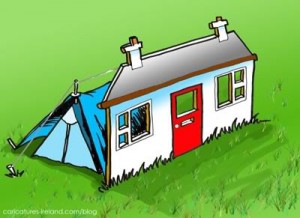 Local authority and NHS leaders are among those attending City of York Council’s health and housing summit.
Local authority and NHS leaders are among those attending City of York Council’s health and housing summit.





